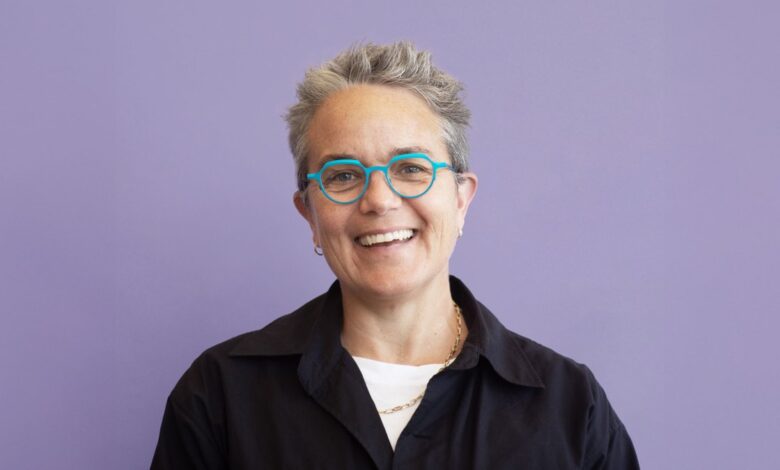Plaid, once aimed at mostly fintechs, is growing its enterprise business and now has over 1,000 customers signed on

As Plaid has expanded its fintech services, so, too, has it grown its customer base.
Plaid got its start as a company that connects consumer bank accounts to financial applications but has since been gradually expanding its offerings to also include lending, identity verification, credit reporting, anti-fraud and payments.
The 11-year-old company was almost acquired by Visa for $5 billion before antitrust regulators shut that deal down. Plaid went on to raise funding at a $13.4 billion valuation after the deal fell through and has worked to diversify its revenue streams since.
In its early days, the fintech giant mostly sold to other fintechs. Then more banks and financial institutions got into the mix. Today, its customer base also includes large companies in general looking to embed solutions into their offerings, including a mix of established fintechs and incumbents, such as Venmo, SoFi, Chime, Rocket Money, H&R Block, Western Union, Affirm, Citi and Shopify.
So it’s fitting that earlier this year, Plaid named Jennifer (Jen) Taylor to serve as its first president. Taylor has years of experience at larger companies, having most recently served as Cloudflare’s chief product officer. Prior to Cloudflare, Taylor held high-level leadership positions at Salesforce, Facebook (now Meta) and Adobe and had a two-year stint as a venture capitalist.
“I’ve had the privilege of working at some very large companies that maybe weren’t necessarily that large when I joined and I got to be a part of efforts, for example, of going from single product to multi product and from single market segment to multi market segment,” she told TechCrunch in an interview.
Plaid’s growth beyond fintech
That expansion into being a multi-product company has led to Plaid starting to see real traction beyond traditional fintech customers. In fact, the company says that enterprise and traditional financial institutions growth is starting to outpace the rest of its business.
Plaid has grown its enterprise customer base to over 1,000, having added hundreds of new enterprise customers over the last year, Taylor told TechCrunch exclusively. The company’s total customer count is 8,000.
“Our broader product suite, encompassing onboarding, payments, lending, and anti-fraud, has opened doors with enterprise companies like RealPage, H&R Block, and Western Union that weren’t on the table a few years ago,” Taylor said. The goal, she added, is for Plaid to evolve into “a one-stop shop” for its customers by offering a suite of integrated products that address their wider business needs.
Meanwhile, product lines such as identity, payments and credit are growing “five times faster” than its core account connectivity products, according to the company. In fact, Plaid’s identity product is currently its fastest-growing product line with more than 50% of its customers there being non-fintech clients.
“As our new products have gained traction, it’s helped Plaid grow into new markets that it didn’t have a presence before,” said Kevin Young, Plaid’s head of product comms, in an interview. “And as those new products grow, that’s pushing us into new market segments.”
The startup has also been gaining customers in the proptech, property management, e-commerce and auto lending spaces. For example, it now counts Zillow, Faire, Carvana, and CarMax as customers.
Overall, the company says that it connects to 12,000 banks and financial institutions with 500 million connected accounts.
Why Plaid launched Layer, its onboarding revamp
On June 18, it revealed its latest offering, Layer, a new product designed to unify “all the critical onboarding steps” for users — from identity verification to bank account linking — “into one secure, instant experience.”
Alain Meier, Plaid’s head of identity, says Layer can reduce the time it takes for someone to sign up for an app or service by 90%. In most cases, people who have already stored their details via Plaid when signing up for other accounts just have to input their phone number and can do things like complete onboarding to apply for a loan or fund their accounts “in just a few clicks.” Customers so far include Possible Finance and Empower.
Meier likened the Layer experience to shopping with Amazon.
“When we’re going to buy things, in general we default to using Amazon. Why do we do that? Because we know that our information is going to be secure. They’ve already got our payment method. It’s going to be extremely fast to check out and we know what to expect,” he said. “So we said to ourselves, ‘Wouldn’t it be great if we could have the same type of experience and that same type of consumer choice of user experience?’”

That increased ease of onboarding has the potential to lead to higher conversion rates for Plaid’s customers, Meier added.
For Taylor, it’s also all part of securing financial information in the upcoming world where AI does more tasks. “The true impact is the differentiation it creates for our network and the products we build on top of it, including underwriting and payments.”
Plaid has been vocal about its plans to go public, although it hasn’t yet set a timeline. But Taylor’s hiring as well as the hiring of a CFO point to those plans.
The company’s strategy of a push into enterprise is a familiar one, in that other large fintechs have also gone in this direction. Payments giant Stripe (both a partner and competitor to Plaid) has long had a focus on enterprise. Expense management startup Brex, while it still serves startups, has also announced it was looking to bolster its enterprise customer base.
How its approach will resonate with investors when it finally does go public is the big question.
Want more fintech news in your inbox? Sign up for TechCrunch Fintech here.
Want to reach out with a tip? Email me at [email protected] or send me a message on Signal at 408.204.3036. You can also send a note to the whole TechCrunch crew at [email protected]. For more secure communications, click here to contact us, which includes SecureDrop (instructions here) and links to encrypted messaging apps.
Source link



